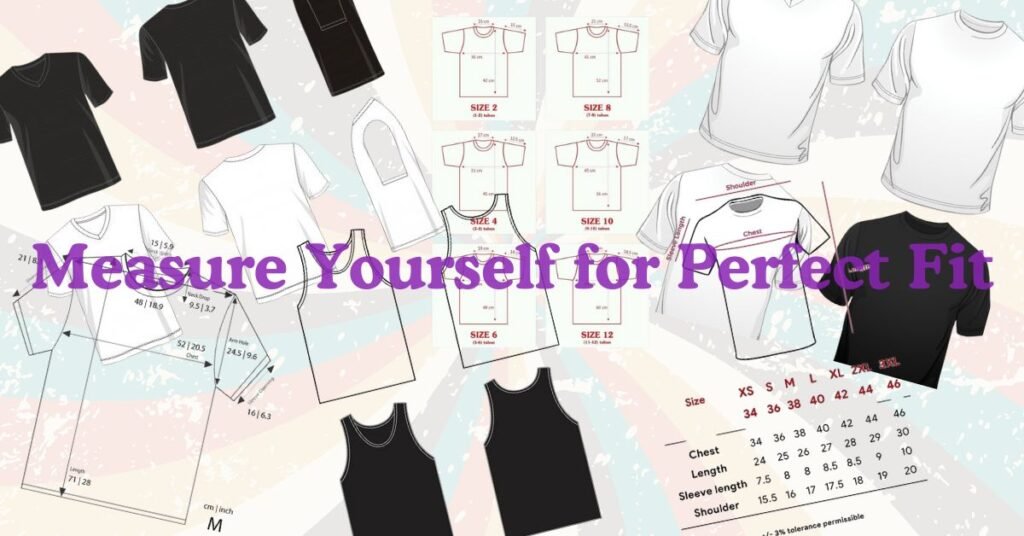
How to Measure Yourself for the Perfect Fit Every Time
It was a frustrating afternoon. I had just received a package I’d been eagerly waiting for—a sleek, graphic hoodie I’d ordered online. But as I tried it on, my excitement turned to disappointment. The hoodie was too tight in the shoulders and too long in the sleeves. I had guessed my size, assuming it would fit like my other clothes, but clearly, I was wrong. That’s when I realized the importance of knowing my exact measurements. If I had taken the time to measure myself, I could have avoided the hassle of returns and the disappointment of not being able to wear my new favorite piece.
Shopping for clothes, whether online or in-store, can be a hit-or-miss experience if you don’t know your measurements. Sizes vary wildly between brands, and even within the same brand, different styles can fit differently. The key to finding the perfect fit every time is to measure yourself accurately and use those measurements as your guide. In this blog post, we’ll walk you through the step-by-step process of measuring yourself, common mistakes to avoid, and how to use your measurements to shop smarter.
Why Measuring Yourself Matters
1. Avoid Sizing Inconsistencies
Clothing sizes are not standardized. A “Medium” in one brand might be a “Large” in another. By knowing your measurements, you can compare them to size charts and choose the size that will fit you best.
2. Save Time and Money
Accurate measurements reduce the chances of ordering the wrong size, saving you the hassle of returns and exchanges. This is especially important for online shopping, where trying on clothes isn’t an option.
3. Enhance Your Confidence
Wearing clothes that fit well can boost your confidence and make you feel more comfortable in your own skin. A perfect fit highlights your best features and ensures you look polished.
Essential Tools for Measuring Yourself
Before you start, gather the following tools to ensure accurate measurements:
- Soft Measuring Tape: A flexible, inelastic tape is ideal for wrapping around your body.
- Full-Length Mirror: Helps you check that the tape is level and positioned correctly.
- Pen and Paper: To record your measurements for future reference.
- Elastic Band: Useful for marking your natural waistline.
- A Friend (Optional): Some measurements, like shoulder width, are easier with assistance.
Step-by-Step Guide to Measuring Yourself
1. Chest/Bust
- How to Measure: Wrap the tape measure around the fullest part of your chest or bust, ensuring it’s level across your back and under your arms.
- Tips: Stand naturally and don’t puff out your chest. The tape should be snug but not tight.
- Example: If you’re shopping for a fitted t-shirt, this measurement ensures it won’t be too tight or too loose around your chest.
2. Waist
- How to Measure: Bend to the side to find the natural crease of your waist. Wrap the tape around this point, which is usually above your belly button and below your rib cage.
- Tips: Keep the tape snug but not compressing your skin.
- Example: For high-waisted jeans, this measurement ensures they sit comfortably without digging in.
3. Hips
- How to Measure: Stand with your feet together and wrap the tape around the fullest part of your hips and buttocks.
- Tips: Make sure the tape is parallel to the floor.
- Example: This measurement is crucial for skirts and fitted dresses to ensure they don’t pull or gape.
4. Inseam
- How to Measure: Measure from the top of your inner thigh (crotch) to the bottom of your ankle .
- Tips: Stand straight and ask a friend to help for accuracy.
- Example: For tailored trousers, this ensures the length is just right—no awkward bunching or high-water hems.
5. Shoulder Width
- How to Measure: Measure from the edge of one shoulder to the other, passing over the back .
- Tips: Keep the tape straight and taut.
- Example: This measurement is essential for blazers and jackets to ensure they fit well across your shoulders.
6. Sleeve Length
- How to Measure: With your arm slightly bent, measure from the shoulder seam down to your wrist.
- Tips: Don’t measure with your arm fully extended, as this can result in sleeves that are too short.
- Example: For hoodies or long-sleeve shirts, this ensures the sleeves hit just at your wrist.
7. Neck
- How to Measure: Wrap the tape around the base of your neck, just above the collarbone.
- Tips: Leave a little room for comfort.
- Example: This measurement is crucial for button-up shirts to ensure the collar isn’t too tight.
Common Measurement Mistakes and How to Avoid Them
1. Measuring Over Bulky Clothing
- Mistake: Measuring over thick clothing can add extra inches and lead to inaccurate results.
- Solution: Measure over tight-fitting clothes or directly on your skin.
2. Pulling the Tape Too Tight
- Mistake: A tight tape measure can result in clothes that are too snug.
- Solution: The tape should be snug but not compressing your skin.
3. Inconsistent Measurements
- Mistake: Taking measurements in a rush or without double-checking can lead to errors.
- Solution: Measure each area twice to ensure accuracy.
4. Ignoring Body Shape
- Mistake: Not accounting for your body shape can lead to ill-fitting clothes.
- Solution: Use your measurements in conjunction with your body type to choose styles that flatter your shape.
Using Your Measurements When Shopping Online
1. Consult Size Charts
Every brand has its own sizing system. Compare your measurements to the size chart provided to find the best fit 2.
2. Read Product Descriptions
Look for details about the fabric and fit. Stretchy fabrics may allow for a tighter fit, while non-stretch fabrics might require a size up.
3. Account for Style
Consider how the garment is meant to fit. For example, oversized styles may require you to size down, while fitted styles may need exact measurements.
4. Check Reviews
Customer reviews often include helpful information about fit and sizing. Look for comments from people with similar measurements to yours.
Final Thoughts
Taking the time to measure yourself is an investment in your wardrobe and your confidence. By knowing your exact measurements, you can shop smarter, avoid the frustration of ill-fitting clothes, and build a wardrobe that fits you perfectly. Whether you’re buying a tailored blazer, a pair of jeans, or a graphic tee, accurate measurements are the key to looking and feeling your best.
So, grab your measuring tape, follow these steps, and take control of your fit. Your future self—and your wardrobe—will thank you.
Looking for clothes that fit like they were made just for you? Check out InkspiredBD’s latest collection, designed with comfort and style in mind. Use your measurements to find your perfect fit today!
